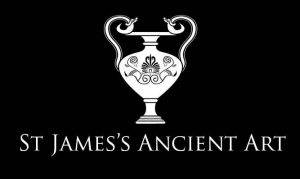The Ancient Egyptians believed that the Scarabaeus Beetle had the ability to spontaneously regenerate itself from cow dung, which these beetles roll around. The scarabs would form the small balls by pushing the dung forward and then bury themselves and lay eggs inside. Consequently, the scarab came to be associated with the spontaneous continuation of the life cycle. In addition, this movement resembled the journey the sun does every day across the sky and therefore the Egyptian God Khepri, who represents the morning sun, became strongly associated with this insect. Scarabs are amongst the most popular and most numerous of all Ancient Egyptian artefacts and were especially employed in the funerary context. Scrabs and scaraboids have been used as decorative motives on rings since the Egyptian New Kingdom, with examples excavated from Greek, Cypriot, Etruscan and Roman cultures.
To discover more about amulets in the Ancient Egyptian world, please visit our relevant post: Amulets in Ancient Egypt.







